Text overflow can break a spreadsheet’s appearance, as it might look awkward with overflowing texts coming out of a cell. If you have a spreadsheet with this problem, you can fix the text-overflow issue in Microsoft Excel so that it looks better and cleaner.

What is text overflow in Microsoft Excel
As the name defines, if the text goes outside a cell, it is called text overflow. The default width of a cell might not always comply with the width of the whole text. The default width of an Excel cell is 8.43mm, which is minimal, and most people often get problems. At such a moment, the text gets hidden by the right-side cell, which is not accessible for reading once you finish editing.
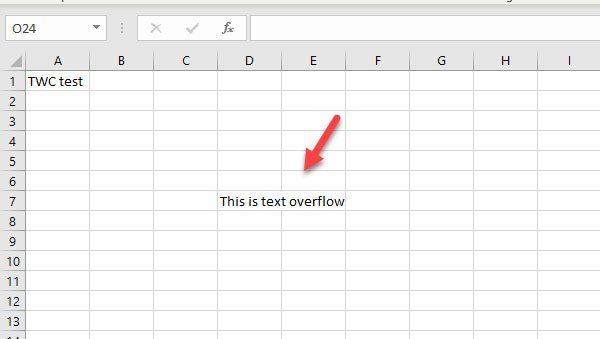
Whichever version of Microsoft Office you are using, you can get the same issue in every Excel spreadsheet. It happens with Excel Online, too. There are several ways to deal with this issue. However, you should know that every method lets you increase the width of the whole column at once. If there are ten cells in a column and you try to increase the width of the first cell, the same will be applied to the whole column—not just one cell.
How to stop or hide Text Overflow in Excel
To fix the text-overflow problem in Microsoft Excel, follow these suggestions-
- Manually increase the width of a column
- Use the AutoFit Column Width option
- Change the default width of a cell
To know the steps in detail, keep reading.
1] Manually increase the width of a column
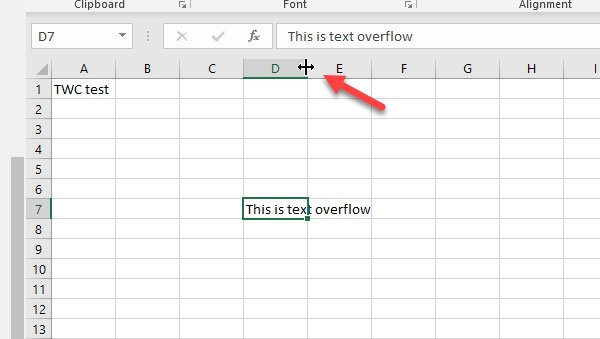
It is probably the easiest way to get rid of this problem. Although it is an old-school method, it works perfectly. No matter if the width of a cell should be 10mm or 100mm, you can change it manually without any expert knowledge. First, open the spreadsheet and hover your mouse over the line divided into two columns. You should see a two-way arrow. Once you get that, click and hold your mouse and drag toward the right side.
2] Use the AutoFit Column Width option
It is a handy option that lets you automatically set a column’s width. It detects the maximum width of a cell and applies that to the whole column. You do not need to use the mouse-dragging method. The advantage of this trick is that you can increase the width of all columns at once.
To get started, select all the columns that need to be changed and click the Format menu, which should be visible in the Home tab. After that, click on the AutoFit Column Width option.
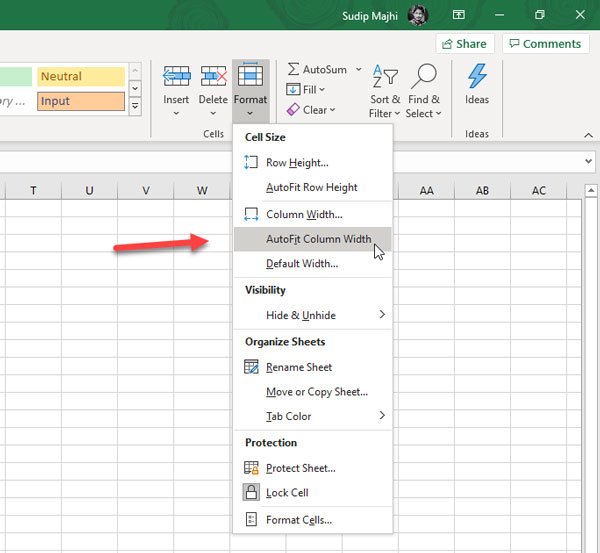
The width should be changed immediately.
You can also click on the section left to A and 1 on the sheet (it has a triangle pointing to the corner) to select all the rows and columns. Then, you can double-click between the headers of the columns to auto-fit.
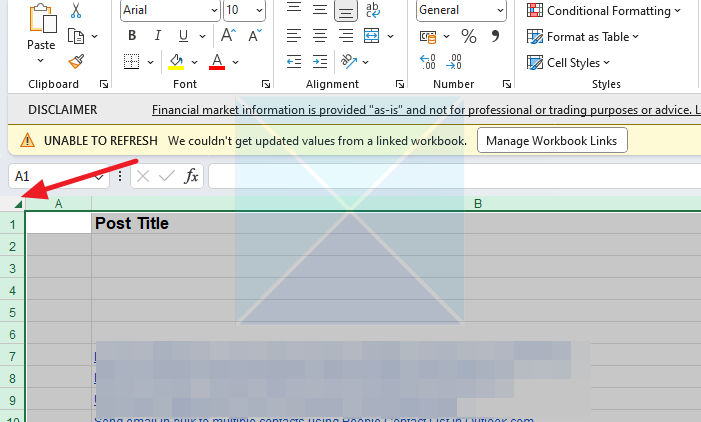
3] Change the default width of the cell or column
You can change the column’s default width if you know precisely how much width you need. To do so, open the Format menu in Excel and select the Default Width option. Then, it would be best if you chose a width.
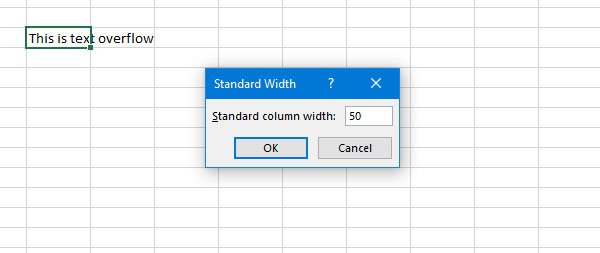
By default, it should carry the millimeter unit, which is the default unit of Excel. If you changed it earlier, you need to set the width accordingly.
I hope this simple tutorial will help you fix the text overflow issue in Microsoft Excel.
How do I wrap text overflow in Excel?
In a worksheet, select the cells that you want to format. On the Home tab, in the Alignment group, click Wrap Text. (On Excel for desktop, you can also select the cell and press Alt + H + W.)
How do I extend two cells in Excel?
Extending a cell also affects all the cells at the bottom and top of it, so you cannot simply extend two or selected cells. However, you can merge two cells to become one, and then both cells should be able to accommodate the text without overflowing.
Leave a Reply